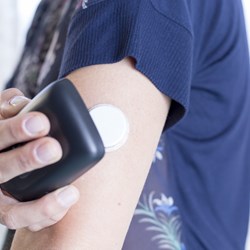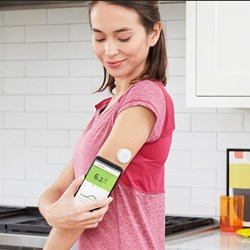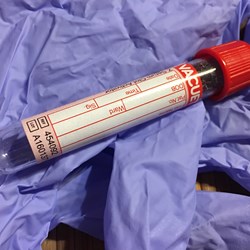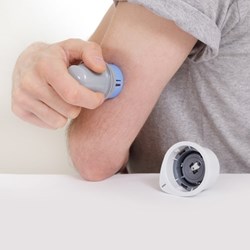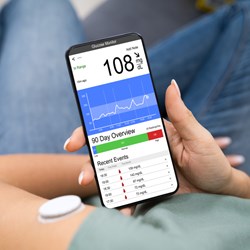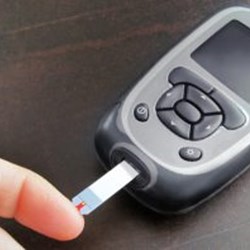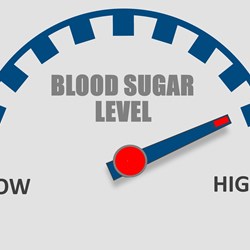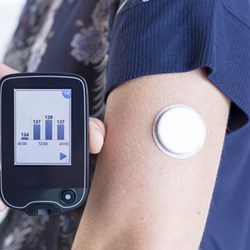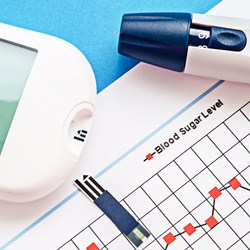Monitoring Diabetes
Everyone with type 1 diabetes will need to monitor their blood glucose levels. Monitoring your blood glucose levels keeps your diabetes on track and reduces the risk of developing complications. Checking can give you a better understanding of how different foods and activities impact your blood glucose levels.
You can monitor your blood glucose levels through a finger-prick check or by using continuous glucose monitoring; either as real-time continuous glucose monitoring (rtCGM) or intermittently scanned continuous glucose monitoring (isCGM), also known as flash glucose monitoring.
An intermittently scanned continuous glucose monitor (isCGM) / flash glucose monitor is a sensor usually worn on the arm, that records your glucose levels roughly every 5 minutes. You can scan the sensor with a reader whenever you want to.
A real-time continuous glucose monitor (rtCGM) is a device that continuously records the amount of glucose and can be inserted in the stomach area or on the arm, depending on what sort of rtCGM you have.
Both systems measure the glucose levels in the fluid just under the skin, through a small cannula which can be inserted at home and needs changing every 10-14 days. There is a time delay between the real glucose in the blood and the glucose level under the skin, so you may still need to do finger-prick tests before deciding on an insulin dose or when treating a hypo. Glucose levels change most rapidly after eating or around exercise.
Continuous glucose monitoring is offered to all people with type 1 diabetes. The availability and funding for these systems will vary; so seek guidance from your local healthcare provider.
HbA1c is your average blood glucose level for the last 2-3 months. A high HbA1c result means that you have too much glucose in your blood. This is one of the diabetes care measures that you need to get at least once a year.
To find out more about monitoring diabetes, register for our Understanding Type 1 eLearning course. You can also find further resources about monitoring diabetes below.
Advanced Search
Resource type -
Language -
Type of diabetes -
Flash glucose monitors are a way of measuring your blood glucose levels without having to prick your fingers. It is a small sensor that you wear just under your skin and records your glucose (sugar) levels continuously throughout the day and night.
This video explains the 3 treatment targets, why they are important.
Finger prick monitoring allows people with diabetes to check their blood glucose levels. It involves pricking the fingertip with a small, sharp device to get a drop of blood, placing the blood on a test strip, and using a meter to read the blood glucose level.
This resource is for people who are about to start or have started using the FreeStyle Libre 2. Please work through the sections within the resource to learn more about the Libre.
This page gives information about HbA1c and Time in Range (TIR) and how these are useful in monitoring diabetes.
Continuous Glucose Monitoring is available for patients in England who fit the criteria defined by NHS England.
Real time continuous glucose monitoring is a method of continually measuring the glucose levels within the interstitial fluid.
This page explains what blood glucose testing is and why it is required for people with diabetes. It covers what the numbers mean, how to control your blood glucose level, and how and when to test your blood glucose.
There are a number of factors that can affect your blood glucose levels, particularly if you are on insulin. This resource explores some of the reasons that may be causing your high blood glucose levels.
This course provides information about continuous glucose monitoring and the Freestyle libre. It is aimed at anyone diagnosed with type 1 diabetes that is using or would like to start using a continuous glucose monitor.
The Diabetes Balance guide to diabetes meters, medications, pens and pumps available in the UK.
